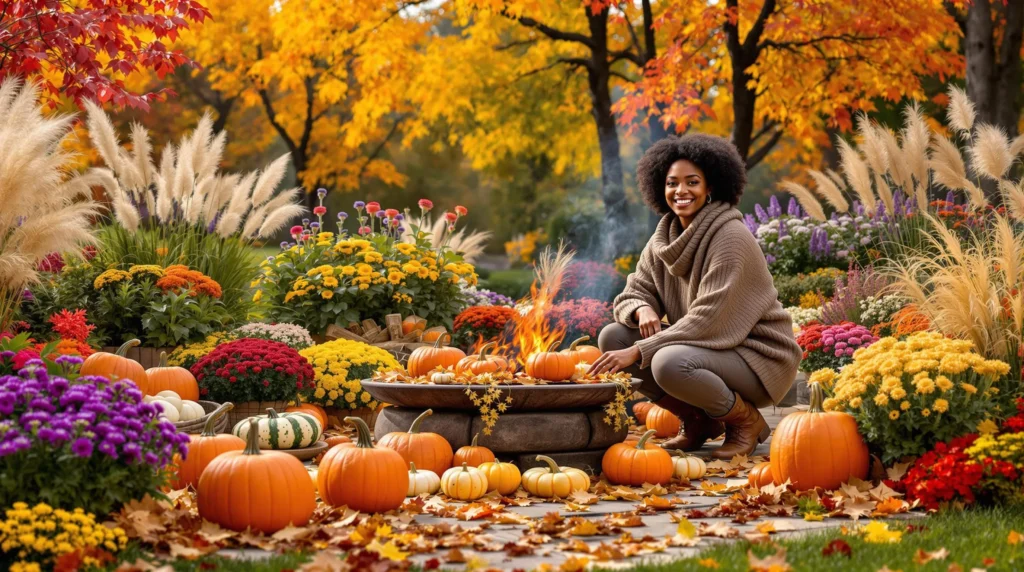10 Stunning Fall Garden Ideas to Transform Your Outdoor Space
1. Create a Vibrant Fall Color Palette
Transform your garden with rich autumn hues by planting chrysanthemums, asters, and ornamental kale. Group these plants in clusters of complementary colors like deep reds, oranges, and yellows to create eye-catching focal points throughout your space.
2. Plant Spring-Blooming Bulbs
Fall is the perfect time to plant bulbs that will bloom in spring. Tuck tulips, daffodils, and crocuses into the soil before the first hard frost for a spectacular display next season. Plant them in groups of 10-12 for maximum visual impact.
3. Establish a Cold-Weather Vegetable Patch
Extend your harvest season by planting cool-season vegetables like kale, spinach, and Brussels sprouts. These hardy crops actually develop better flavor after light frosts and can provide fresh produce well into the winter months.
4. Set Up a Pumpkin and Gourd Display
Create a festive autumn display using pumpkins, gourds, and ornamental corn arranged on steps, stumps, or around garden beds. Choose varieties in different shapes, sizes, and colors for visual interest that lasts throughout the season.
5. Install Industry Lighting
Combat the earlier sunsets of fall by adding strategic lighting to your garden. Solar path lights, string lights in trees, or spotlights on special plants will extend your enjoyment of the garden into the evening hours and highlight seasonal colors.
6. Add Ornamental Grasses
Incorporate ornamental grasses like feather reed grass or fountain grass that reach their peak in autumn. Their graceful plumes catch the light beautifully and add movement to the garden as they sway in the fall breeze.
7. Create a Cozy Fire Pit Area
Design a gathering space around a fire pit or outdoor fireplace to enjoy your garden on crisp autumn evenings. Surround it with weather-resistant seating and container plantings of fall bloomers for a perfect outdoor retreat.
8. Mulch with Colorful Fallen Leaves
Instead of bagging all your fallen leaves, use them as decorative mulch in garden beds. The rich colors create a natural carpet that protects plant roots while adding seasonal beauty and returning nutrients to the soil as they break down.
9. Hang Seasonal Wreaths and Garden Art
Enhance your outdoor space with fall-themed decorative elements like wreaths made from dried hydrangea blooms, seed heads, or twigs. Weather-resistant garden art in autumn colors can also add personality to your fall industry.
10. Plant Trees and Shrubs with Fall Interest
Fall is an ideal time to plant woody specimens that offer autumn appeal through foliage, berries, or bark. Japanese maples, burning bushes, or oakleaf hydrangeas provide spectacular color, while beautyberry and winterberry offer vibrant berries that persist into winter.
Planting Fall-Blooming Flowers for Vibrant Color
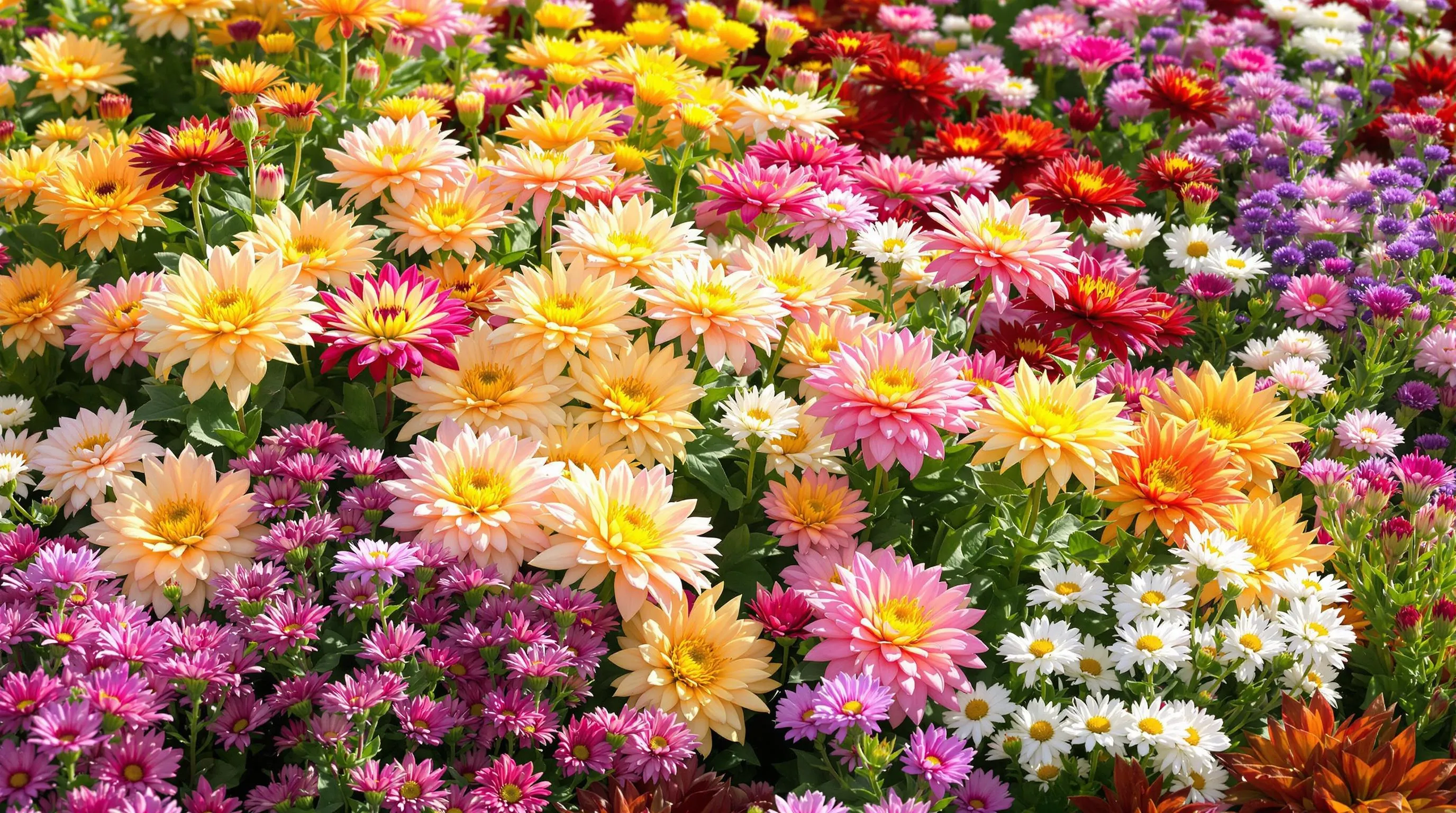
Fall gardens don’t have to fade into browns and golds. By strategically selecting autumn-blooming flowers, you’ll create a industry bursting with color well into the cooler months. These hardy blooms provide essential late-season nectar for pollinators while adding vibrant visual interest to your outdoor space.
Best Chrysanthemums Varieties for Autumn Display
Chrysanthemums (mums) are the quintessential fall flower, offering an explosion of color when many other plants have finished blooming. For stunning autumn displays, try ‘Sheffield Pink’ for its peachy-salmon blooms that last for weeks, or ‘Clara Curtis’ with its bright pink daisy-like flowers that attract butterflies. ‘Mary Stoker’ delivers beautiful yellow blooms that transition to cream, while ‘Ruby Mound’ provides rich burgundy flowers that complement fall foliage perfectly. Plant mums in well-draining soil with at least 6 hours of sunlight for optimal blooming. Space plants 18-24 inches apart to allow for proper air circulation, which helps prevent powdery mildew and other fungal issues. Water consistently at the base to avoid wetting the foliage, and deadhead spent blooms to encourage continuous flowering throughout the season.
Incorporating Asters and Sedum for Late-Season Blooms
Asters and sedums create a perfect companion planting duo for fall gardens. Asters produce star-shaped flowers in purples, pinks, blues, and whites that bloom from late summer through fall. New England asters (Symphyotrichum novae-angliae) reach 3-6 feet tall with vibrant purple blooms, while ‘Wood’s Purple’ offers a more compact option at just 12-18 inches. Plant asters in full sun to partial shade in well-draining soil. Sedums, particularly ‘Autumn Joy’ and ‘Brilliant,’ develop clusters of tiny star-shaped flowers that transition from pink to copper as the season progresses. These drought-tolerant succulents thrive in sunny locations with poor soil and provide winter interest with their dried flower heads. Both plants attract beneficial pollinators and require minimal maintenance, making them perfect additions to your fall garden palette. For maximum impact, group these plants in clusters of three or five, creating drifts of color throughout your garden beds.
Creating a Fall Vegetable Garden That Thrives
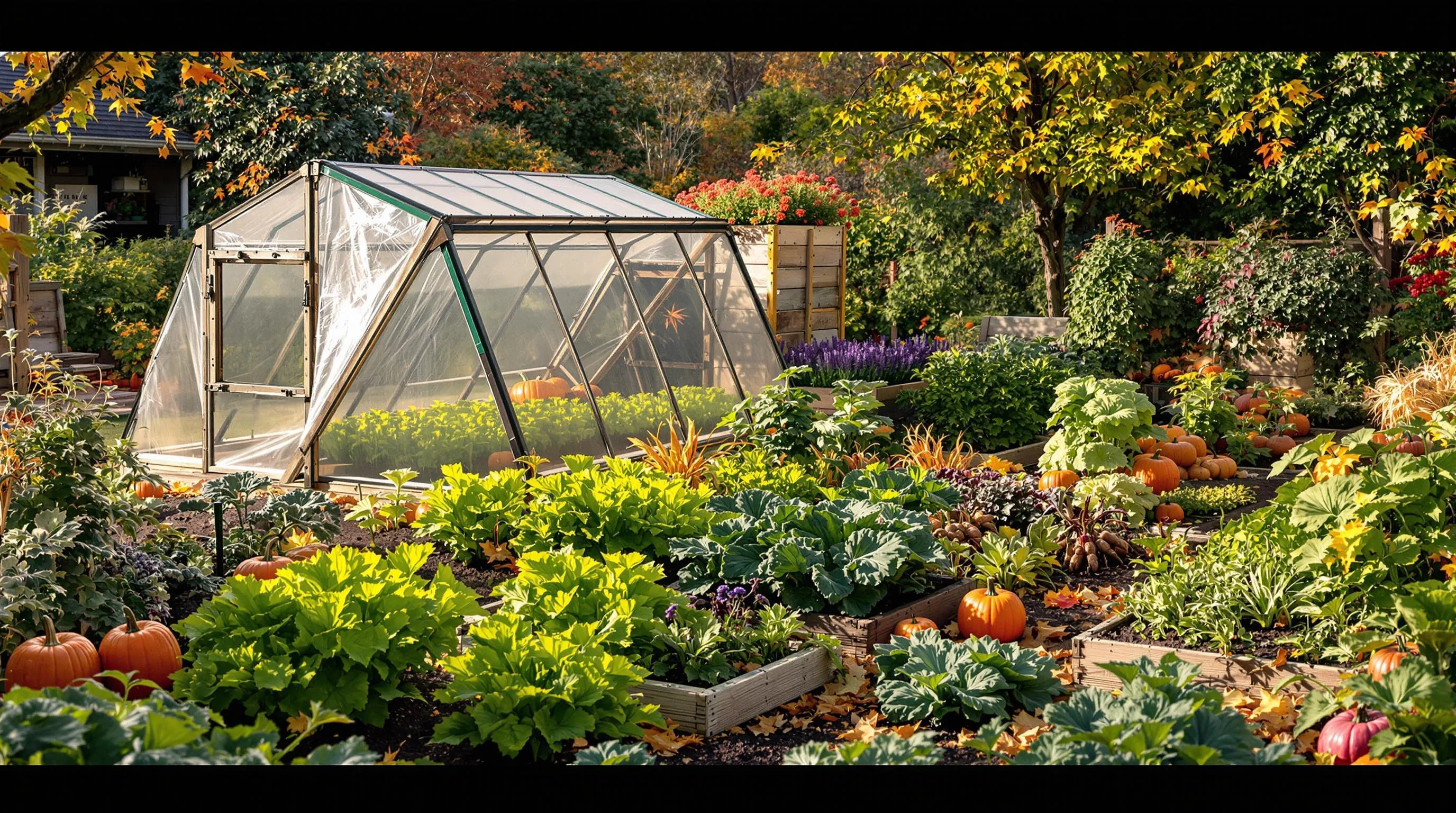
Fall presents a perfect opportunity to grow delicious, nutritious vegetables that actually prefer cooler temperatures. With proper planning and the right crop selection, you’ll enjoy fresh harvests well into the winter months.
Cold-Hardy Vegetables to Plant in September
September offers ideal conditions for planting many cold-hardy vegetables that thrive as temperatures drop. Leafy greens like kale, spinach, and Swiss chard develop sweeter flavors after light frosts, making them perfect fall crops. Plant root vegetables such as carrots, beets, and turnips now for harvesting through early winter—they’ll store nutrients in their roots as temperatures cool. Cruciferous vegetables including Brussels sprouts, cabbage, and cauliflower also excel in fall gardens, often producing better-tasting harvests than their spring-planted counterparts. For quick results, try fast-growing radishes, which can be ready to harvest in just 3-4 weeks. Garlic planted in fall develops stronger root systems before winter dormancy, resulting in larger bulbs next summer. When selecting varieties, look specifically for “cold-hardy” or “winter” types like ‘Winter Density’ lettuce or ‘Toscano’ kale for best results in your fall vegetable garden.
Setting Up Season Extension Systems for Winter Harvests
Extend your growing season with simple protection systems that shield plants from frost and cold temperatures. Cold frames—essentially bottomless boxes with transparent lids—create microenvironments that trap heat and block wind, allowing crops to grow weeks longer than they would in open gardens. Install row covers made of lightweight fabric directly over plants to provide 4-8°F of frost protection while still allowing sunlight, water, and air circulation. For more substantial protection, consider hoop houses constructed with PVC pipes covered with greenhouse plastic, which can maintain growing temperatures even when outside conditions dip below freezing. Water-filled containers placed inside these structures absorb heat during the day and release it at night, further stabilizing temperatures. Strategic mulching with straw or leaves around root crops allows you to harvest them throughout winter in many climate zones. These season extension techniques not only protect your fall vegetables but also create ideal conditions for cold-season crops to develop maximum flavor and nutritional content.
Decorating Your Garden with Autumn Elements
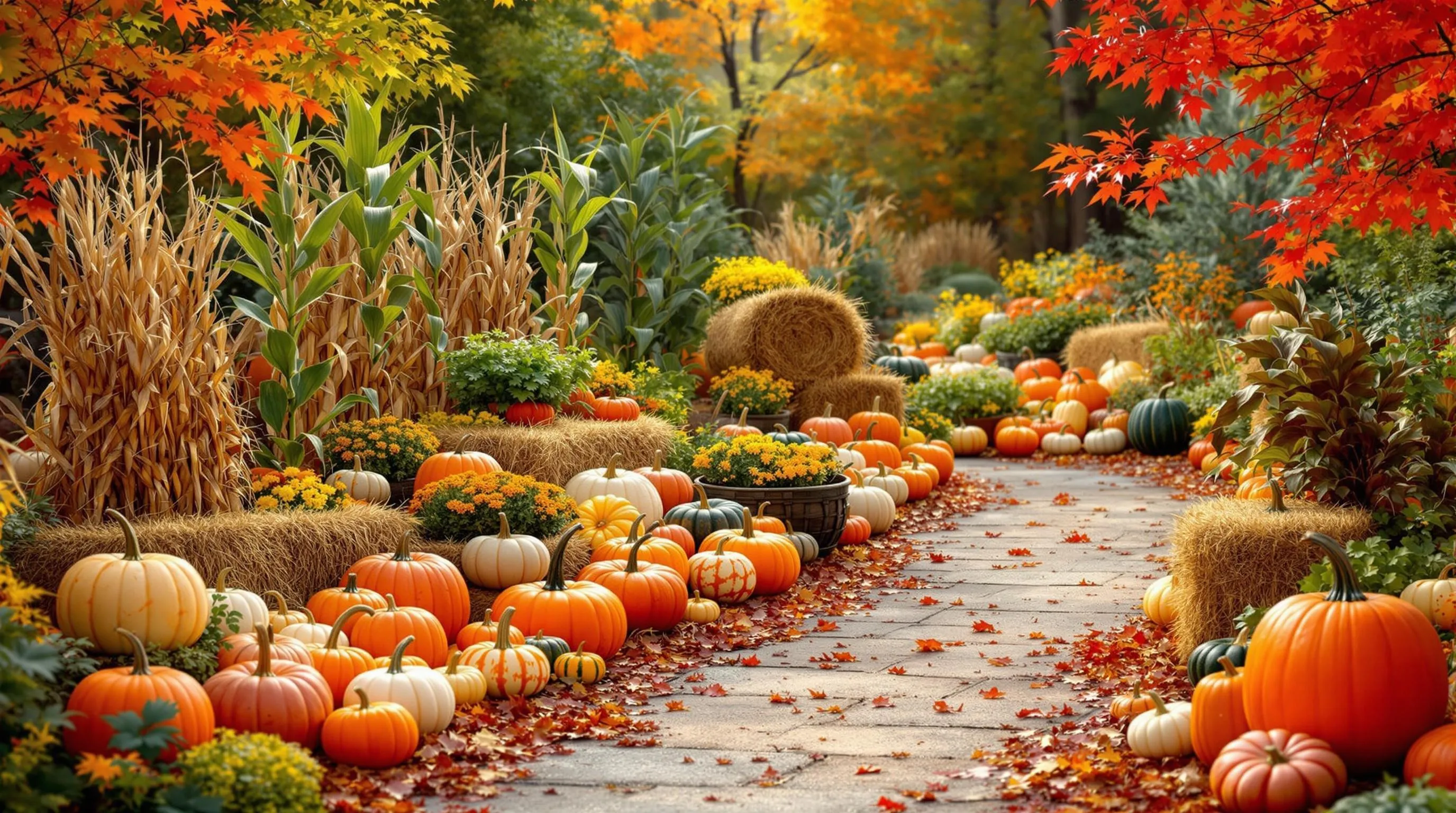
Fall offers an abundance of natural materials that can transform your garden into a seasonal showcase. These decorative elements not only celebrate the harvest season but also create visual interest as summer blooms fade.
Using Pumpkins and Gourds as Natural Decorations
Pumpkins and gourds provide instant fall charm with their varied shapes, sizes, and colors. Create eye-catching displays by arranging them along garden paths, clustered on steps, or stacked in tiered formations near entryways. Mini pumpkins work beautifully in container gardens, while larger varieties make striking focal points when placed strategically throughout your industry. For longer-lasting displays, consider using faux pumpkins or preserving real ones with a light coat of petroleum jelly. White pumpkins offer an elegant alternative to traditional orange and pair beautifully with purple mums or ornamental kale. Hollow out larger specimens to use as unique planters for fall flowers or succulents, adding a creative twist to your autumn garden décor.
Incorporating Corn Stalks and Hay Bales for Rustic Charm
Corn stalks and hay bales bring textural contrast and countryside appeal to your fall garden. Bundle dried corn stalks around porch posts, mailboxes, or garden entrances, securing them with natural twine for an authentic harvest look. Hay bales serve as versatile decorative platforms—position them in corners or alongside garden beds, then top with collections of pumpkins, potted chrysanthemums, or lanterns for dimension. These rustic elements create natural seating areas and can later be repurposed as mulch or compost. For added visual interest, incorporate dried corn husks, miniature scarecrows, or wreaths made from dried autumn leaves. This combination of textures creates a warm, seasonal atmosphere that celebrates the agricultural traditions of fall.
Preparing Garden Beds for Winter During Fall
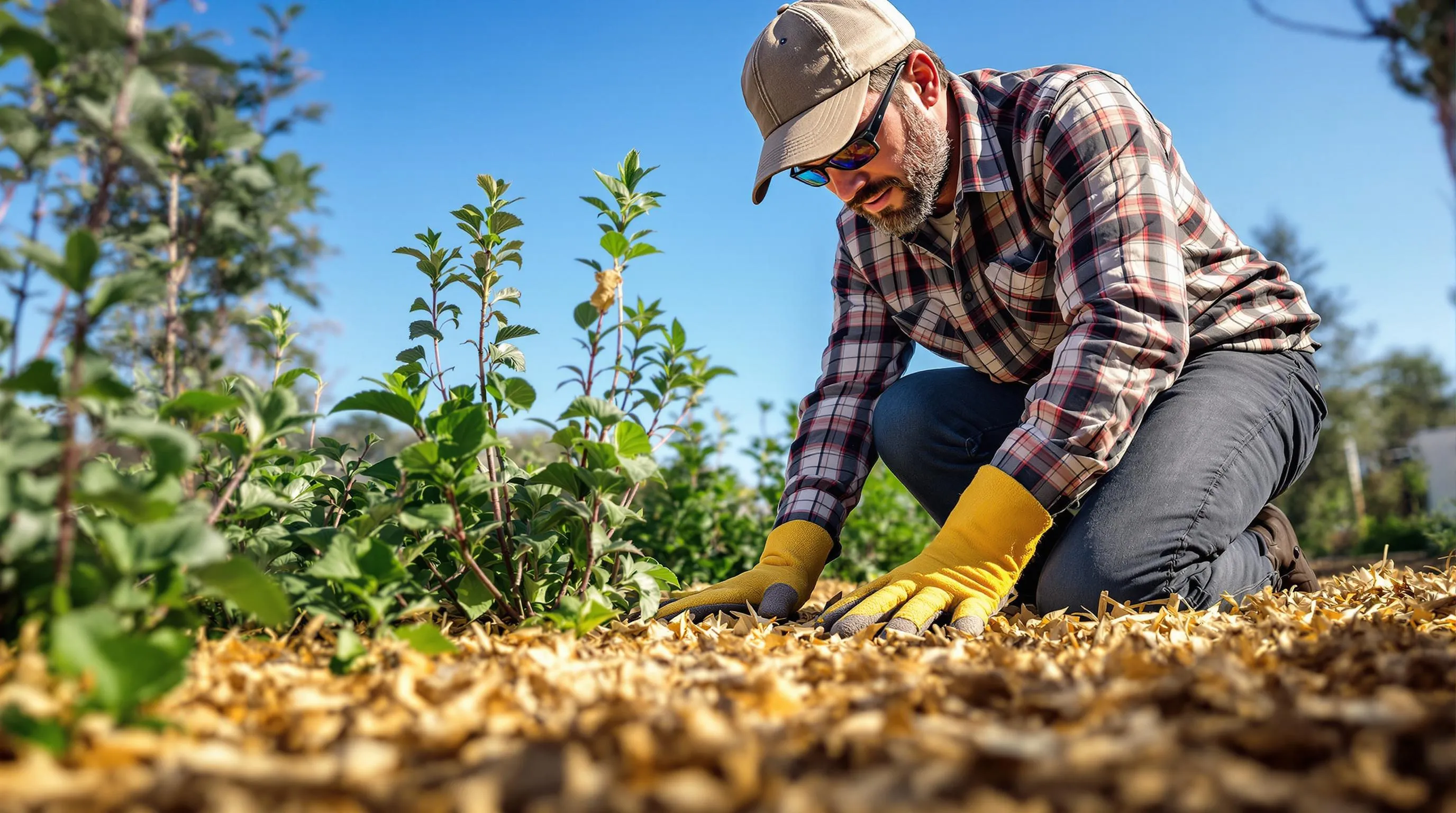
Fall isn’t just about harvesting the last crops and admiring colorful foliage—it’s the perfect time to prepare your garden beds for winter dormancy and spring revival. Taking these proactive steps now will reward you with healthier soil and more vibrant plants when warmer weather returns.
Mulching Techniques to Protect Perennials
Mulching is your garden’s winter coat, providing essential protection for perennial plants during harsh weather. Apply a 2-3 inch layer of organic mulch around perennials after the first hard frost but before the ground freezes completely. Shredded leaves make excellent free mulch—simply run your lawn mower over fallen leaves and collect them. Pine needles work wonderfully for acid-loving plants like rhododendrons and blueberries. For roses, create protective mounds 8-12 inches high around the base using compost or topsoil, then cover with straw or shredded bark. Avoid piling mulch directly against plant stems or tree trunks to prevent rot and pest problems. Leave a 2-inch gap to allow proper air circulation while still providing the insulation your plants need to survive winter’s temperature fluctuations.
Adding Compost to Enrich Spring Soil
Fall composting gives you a head start on next year’s garden success. Spread a 1-2 inch layer of finished compost over your emptied vegetable beds and around perennials to gradually break down throughout winter. This slow-release approach allows valuable nutrients to incorporate into the soil naturally through freeze-thaw cycles and earthworm activity. Turn under green manure crops like clover or buckwheat that you planted in late summer—they’ll decompose over winter, adding organic matter and nutrients while improving soil structure. Coffee grounds, crushed eggshells, and vegetable scraps from holiday cooking can be directly trenched into vacant garden areas rather than waiting for them to decompose in your compost bin. Test your soil pH now and add amendments like lime (to raise pH) or sulfur (to lower pH) in fall so they’ll have ample time to work their magic before spring planting season arrives.
Designing with Fall Foliage Plants for Maximum Impact
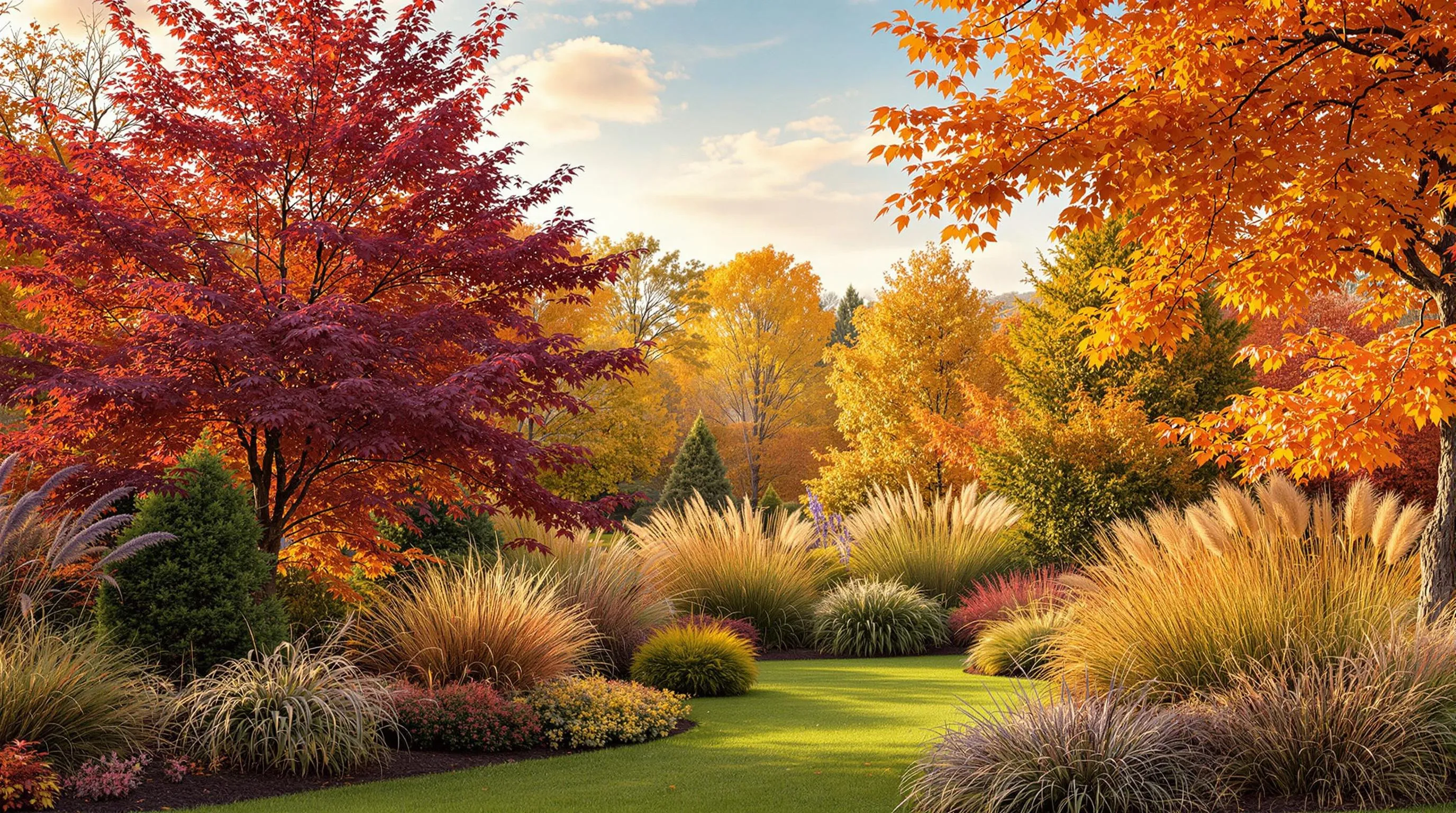
Fall’s fiery palette transforms your garden into a showcase of nature’s most spectacular color display. Strategic placement of autumn-hued plants creates dramatic visual impact that can elevate your industry from ordinary to extraordinary.
Trees and Shrubs with Spectacular Autumn Colors
Select trees and shrubs that deliver stunning fall color to create focal points in your garden. Japanese maples offer exceptional burgundy and crimson foliage, with varieties like ‘Bloodgood’ and ‘Emperor I’ maintaining their color for weeks. Burning bush (Euonymus alatus) lives up to its name with intense scarlet leaves that glow against autumn sunlight. For golden hues, incorporate witch hazel (Hamamelis) or ginkgo trees, whose fan-shaped leaves turn a luminous yellow before dropping. Oakleaf hydrangeas provide a dual benefit—summer blooms followed by deep burgundy foliage that persists well into fall. Plant these showstoppers where they’ll be backlit by morning or evening sun to amplify their fiery displays. Consider creating a three-season view from key windows by positioning fall standouts like Virginia sweetspire or fothergilla where you’ll enjoy them from indoors.
Ornamental Grasses That Shine in Fall Light
Ornamental grasses reach their peak glory in autumn when their feathery plumes catch the golden low-angle sunlight. Miscanthus varieties like ‘Morning Light’ and ‘Flame Grass’ develop stunning coppery seed heads that sway elegantly in fall breezes. Position these grasses where backlighting will illuminate their silhouettes—along walkways or against darker backgrounds for maximum impact. Little bluestem (Schizachyrium scoparium) transforms from blue-green summer foliage to rich burgundy and orange fall colors, maintaining visual interest through winter with its upright structure. Switchgrass (Panicum virgatum) cultivars like ‘Shenandoah’ develop wine-red tips by late summer that deepen as temperatures drop. Plant grasses in groups of three or five for a dramatic statement, and pair them with late-blooming perennials like asters or sedum for textural contrast. Their movement adds a ever-changing element to your fall garden while their durability ensures they’ll stand strong through early winter snows.
Creating Cozy Outdoor Living Spaces for Cooler Weather
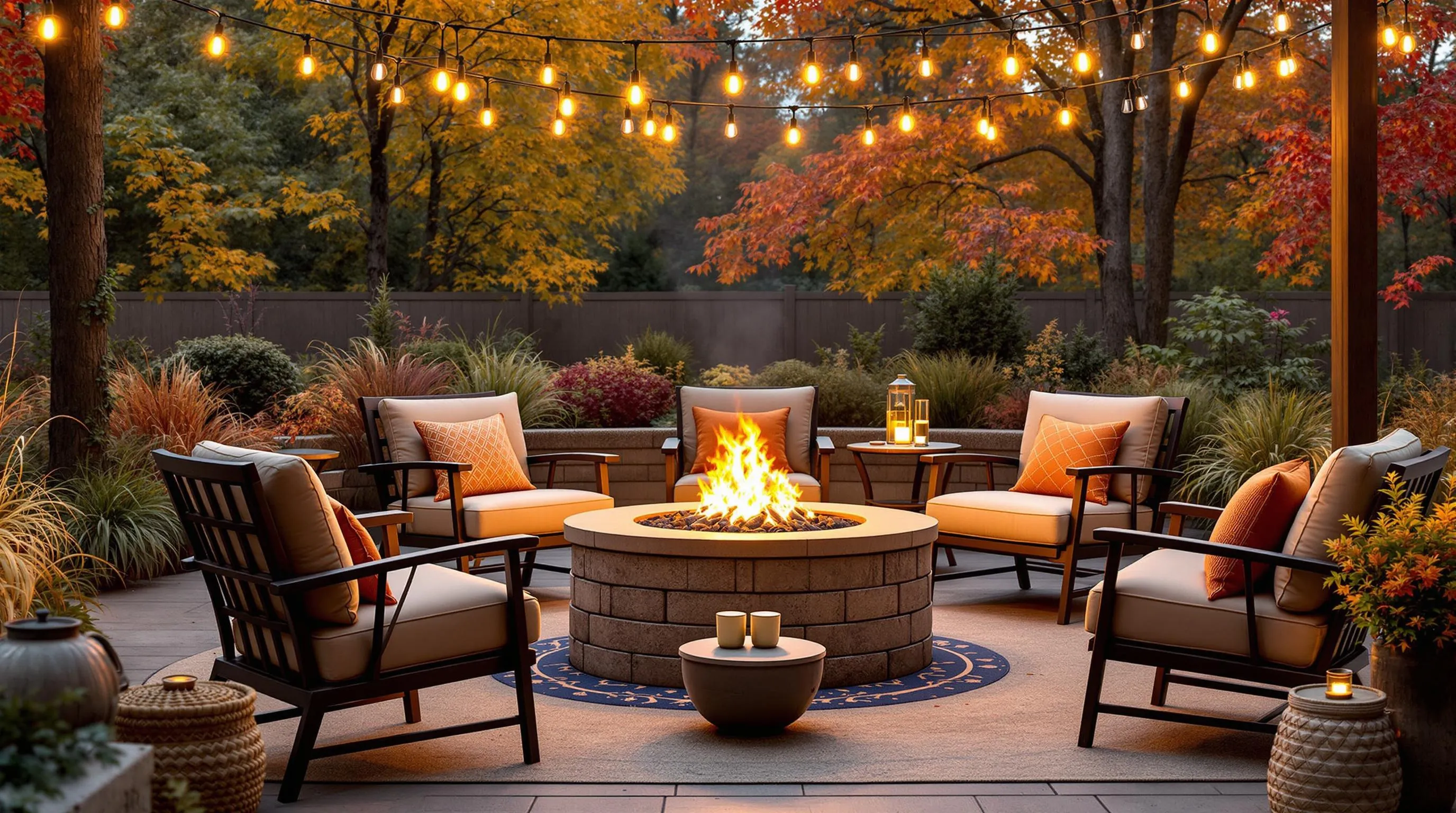
As temperatures drop, your garden can transform into a warm retreat with thoughtful adjustments to your outdoor living spaces. Fall offers the perfect opportunity to reimagine your patio or deck as a cozy sanctuary where you can continue enjoying the outdoors well into the cooler months.
Fire Pit Arrangements for Fall Entertaining
Create an inviting gathering spot by centering your outdoor space around a fire pit. Position comfortable seating in a circle to encourage conversation while guests stay warm. Choose a fire pit that matches your garden aesthetic—options range from rustic cast iron bowls to sleek modern gas models. Arrange weather-resistant chairs with a 4-6 foot diameter around the fire for optimal warmth without overcrowding. Add soft outdoor pillows and throw blankets in autumn hues like burnt orange and deep red to enhance comfort. Consider placing a small side table near each seat for convenient drink placement. For added ambiance, string market lights overhead or place lanterns strategically around the area to create a magical evening atmosphere when the sun sets earlier.
Weather-Resistant Furniture and Accessories
Invest in furniture designed to withstand fall’s unpredictable conditions to extend your outdoor living season. Look for pieces made from treated wood, powder-coated aluminum, or all-weather wicker that can handle moisture and temperature fluctuations. Waterproof cushions with quick-drying properties eliminate the hassle of bringing them inside during sudden rain showers. Add durability and style with outdoor rugs made from synthetic materials like polypropylene, which resist mold and mildew while defining your space. Weather-resistant storage ottomans serve dual purposes—providing extra seating and a place to stow blankets and pillows. Complete your fall outdoor living area with copper or galvanized metal lanterns, weatherproof bluetooth speakers, and a propane heater for especially chilly evenings. These thoughtful additions create a functional, inviting outdoor room that remains usable well into the cooler season.
Fall Container Gardening Ideas for Porches and Patios
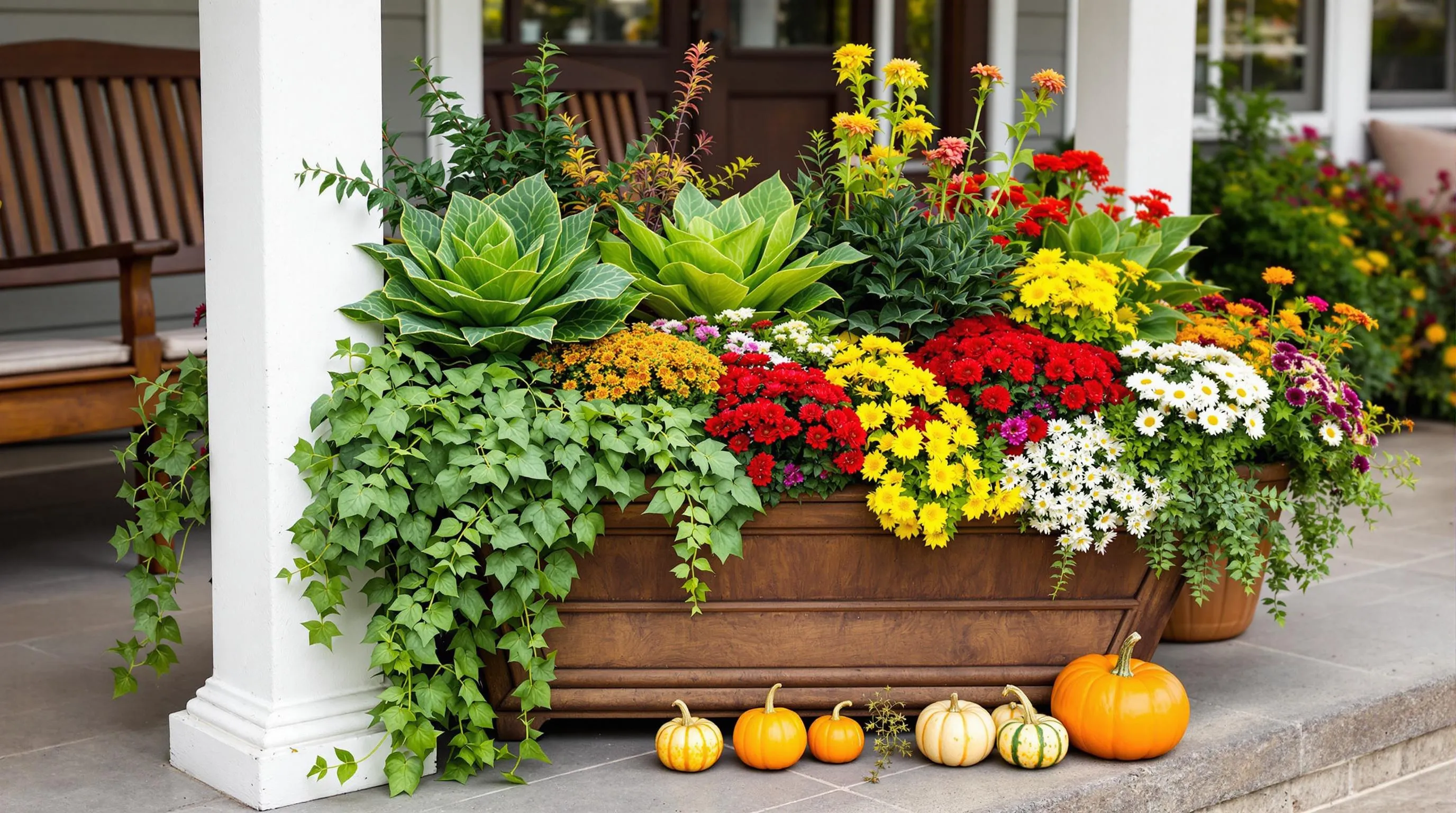
Container gardening offers a flexible way to enjoy fall’s beauty even in limited spaces. With the right plant selections and creative arrangements, your porches and patios can showcase autumn’s rich colors and textures without requiring a full garden.
Plant Combinations for Autumn Container Displays
Create stunning fall containers by combining plants with complementary colors, textures, and heights. Start with a tall focal point like ornamental kale or cabbage, then add mid-height plants such as heucheras or sedums for interesting foliage. Include trailing elements like ivy, wire vine, or sweet potato vine to cascade over the edges. For instant autumn color, incorporate chrysanthemums in bronze, purple, or gold alongside ornamental peppers with their vibrant fruits. Dusty miller adds silvery contrast while purple fountain grass provides height and movement. Consider unexpected additions like miniature conifers or small ornamental grasses that will maintain interest throughout the season. For the best visual impact, follow the “thriller, filler, spiller” formula—placing dramatic focal plants in the center, bushy fillers around them, and trailing plants at the edges.
Repurposing Summer Containers for Fall Appeal
Don’t rush to empty your summer containers—transform them for fall with strategic replacements. Remove spent summer annuals while keeping structural plants like coleus, sweet potato vine, or Persian shield that still look healthy. Supplement with cold-tolerant additions such as pansies, violas, and ornamental cabbage that thrive in cooler temperatures. Add instant seasonal flair with small pumpkins, gourds, or pinecones nestled among the plants. Consider integrating branches with colorful foliage or berries for height and seasonal texture. For containers in shadier spots, replace sun-loving summer blooms with autumn favorites like toad lilies or Japanese anemones. Even completely empty containers can be repurposed as bases for creative displays of gourds, dried hydrangea blooms, and ornamental grasses—creating seasonal focal points without extensive replanting. Remember to adjust your watering schedule for cooler temperatures, as fall containers typically require less frequent watering than summer displays.
Attracting Wildlife to Your Fall Garden
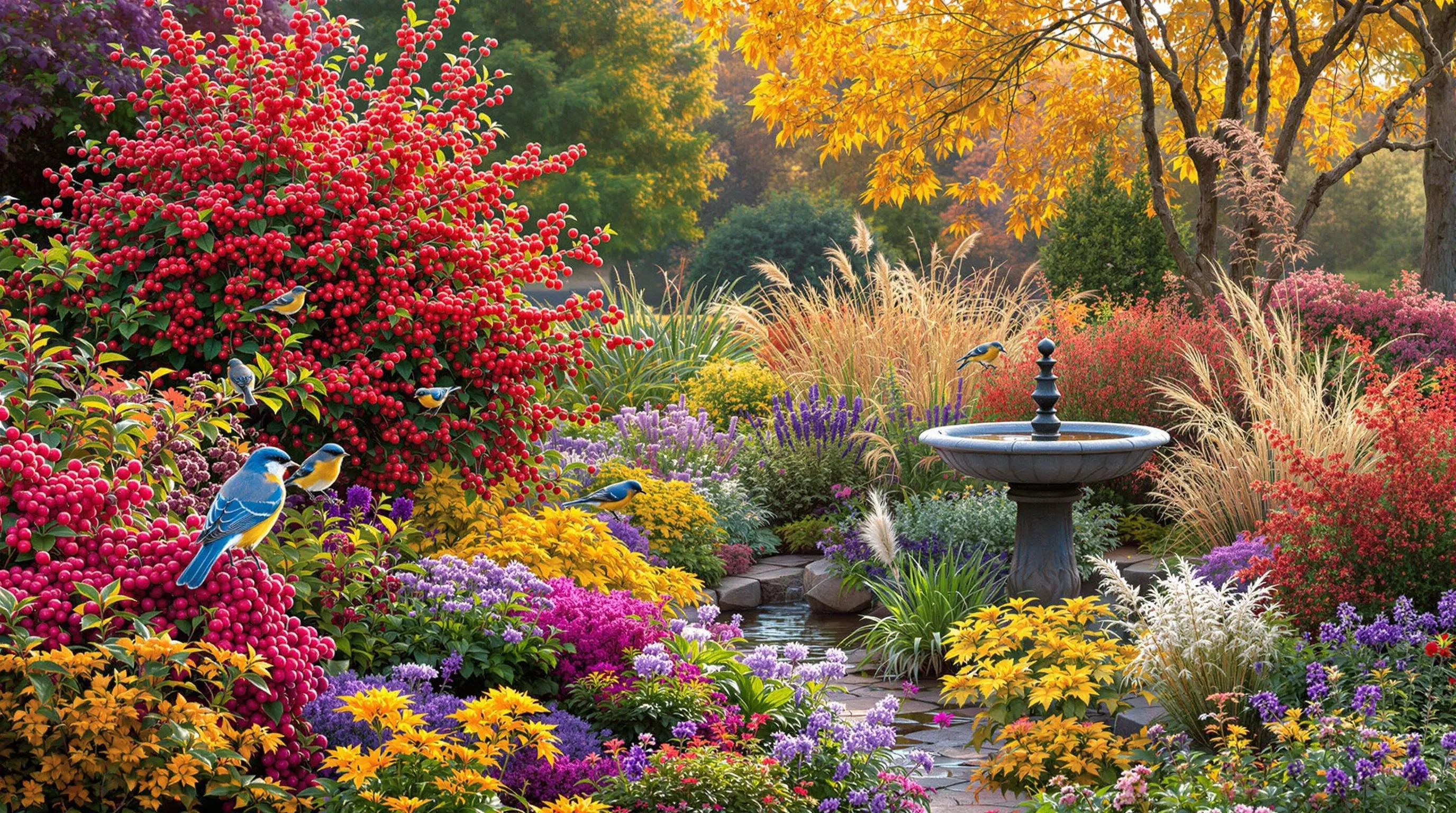
As autumn transforms your industry, you can create a sanctuary that welcomes and sustains wildlife through the changing season. A wildlife-friendly fall garden not only helps local fauna prepare for winter but also brings your outdoor space to life with movement and activity.
Bird-Friendly Berry Plants for Autumn
Fall is the perfect time to attract birds with berry-producing plants that provide essential nutrition as winter approaches. Incorporate American beautyberry (Callicarpa americana) with its striking purple clusters that persist well into winter, offering a feast for robins and mockingbirds. Winterberry holly (Ilex verticillata) produces vibrant red berries that attract bluebirds and cedar waxwings when food sources become scarce. Native viburnums like arrowwood (Viburnum dentatum) and cranberrybush (Viburnum trilobum) provide nutritious berries while adding spectacular fall color to your industry. Plant these berry producers near windows or seating areas to enjoy the bird activity they’ll attract. Remember to include a reliable water source such as a heated bird bath to provide drinking water when natural sources freeze.
Creating Habitat for Beneficial Insects During Seasonal Change
Transform your fall garden into an insect sanctuary by leaving some areas unmaintained through winter. Allow ornamental grasses and perennials like coneflowers and black-eyed Susans to stand uncut, providing shelter and food through their seed heads for native bees and butterflies. Create insect hotels using hollow stems, pine cones, and fallen wood to offer overwintering sites for pollinators like mason bees and beneficial predators such as ladybugs. Maintain a layer of fallen leaves in garden beds rather than removing them completely—this leaf litter creates essential habitat for firefly larvae, luna moths, and many butterfly species during their pupal stage. Include late-blooming nectar sources like asters, goldenrod, and sedum to support monarch butterflies during migration and provide essential energy for pollinators preparing for winter dormancy.
Maintaining Your Lawn During the Fall Season
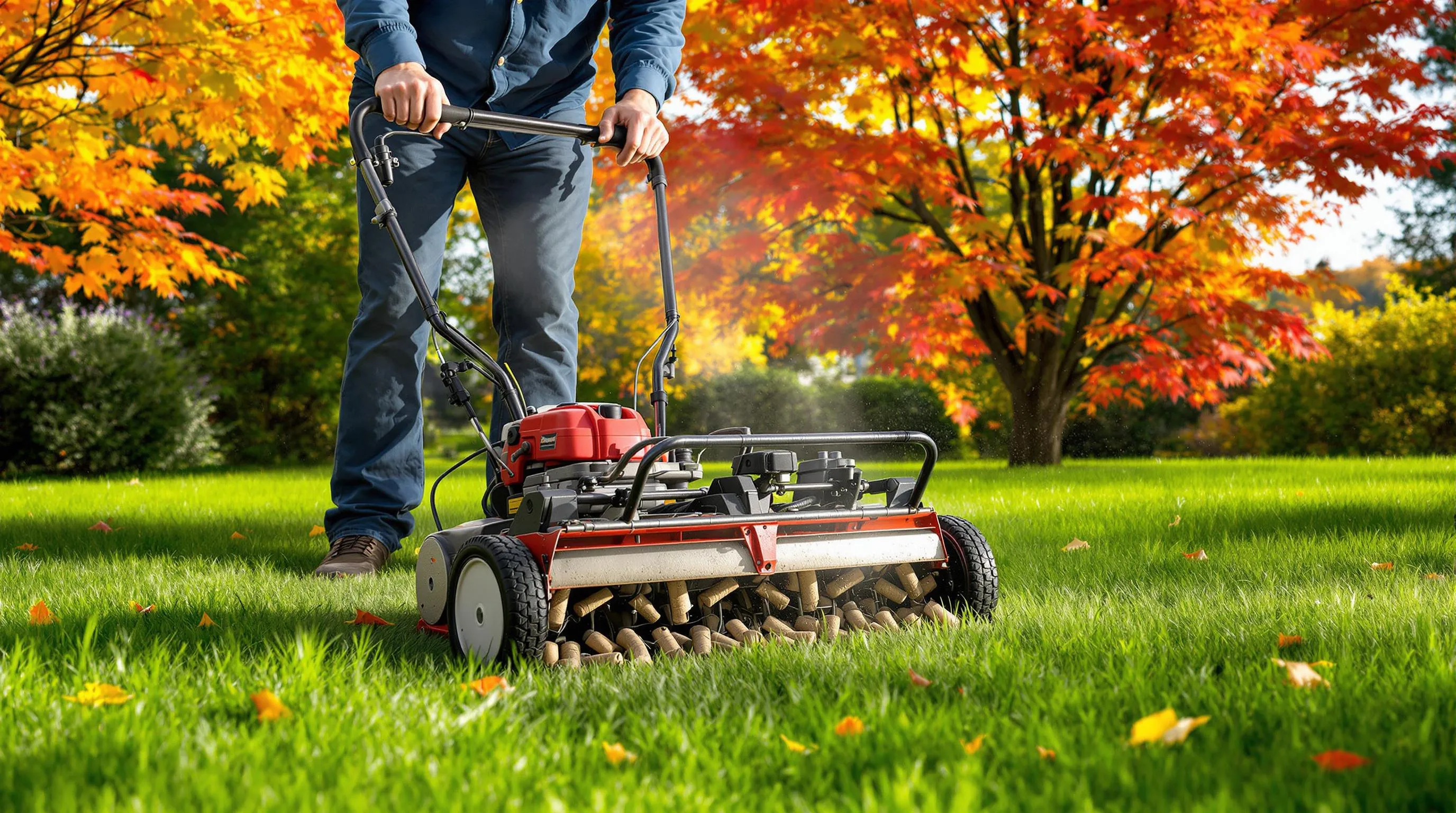
Fall is the perfect time to give your lawn the attention it needs for a lush spring comeback. While many homeowners focus on their gardens and landscapes, your lawn requires exact care during autumn to thrive next year.
Aeration and Overseeding for Healthier Spring Grass
Aeration is essential for fall lawn maintenance as it alleviates soil compaction that occurs throughout the summer months. Use a core aerator to remove small plugs of soil, allowing oxygen, water, and nutrients to penetrate deeper into the root zone. The ideal time for aeration is early to mid-fall when your grass is still actively growing but temperatures have cooled. After aerating, overseed your lawn with a high-quality grass seed appropriate for your region. The holes created by aeration provide perfect seed-to-soil contact, improving germination rates by 30-50%. Water newly seeded areas lightly twice daily until seedlings establish, then reduce to deeper, less frequent watering to encourage deep root growth.
Fall Fertilization Schedule for Different Lawn Types
Your fertilization approach should vary based on your grass type for optimal results. Cool-season grasses (Kentucky bluegrass, fescue, ryegrass) benefit most from fertilizing in early September and again in late October or early November. Apply a fertilizer with an NPK ratio of approximately 3-1-2 or 4-1-2, with the final application having higher potassium to boost winter hardiness. For warm-season grasses (Bermuda, zoysia, St. Augustine), apply a low-nitrogen fertilizer in early fall, then stop fertilizing about 4-6 weeks before the first expected frost to prevent tender new growth that could be damaged by cold temperatures. Always follow application rates on the package and consider a soil test to determine exact nutrient needs for your lawn’s soil conditions.
Extending Your Gardening Season: Fall Garden Success Tips
Transforming your garden for fall isn’t just about preparing for winter—it’s about embracing a whole new season of gardening possibilities. By incorporating cold-weather vegetables vibrant autumn blooms and strategic seasonal décor you’ll create an outdoor space that remains beautiful and productive long after summer fades.
Remember that fall gardening is as much about planning for the future as enjoying the present. While you plant spring bulbs and prepare beds with rich compost you’re also creating immediate beauty with colorful foliage ornamental grasses and festive displays.
Your fall garden can become a cozy retreat with the right outdoor living elements and thoughtful container arrangements. Whether you have acres of land or just a small patio these autumn gardening practices will help you maximize every moment outdoors before winter arrives.

